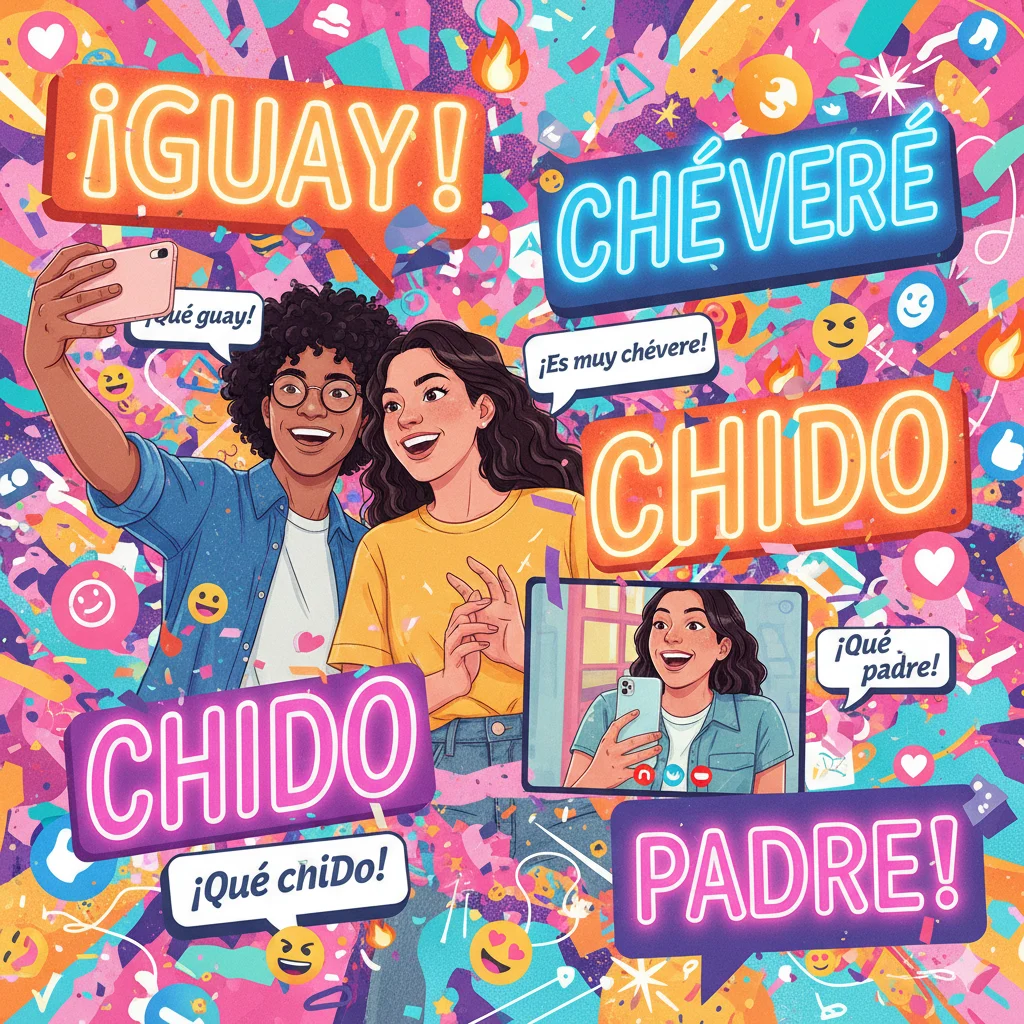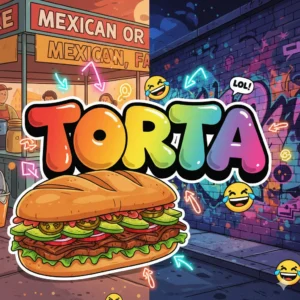When you travel to a Spanish-speaking country or scroll through Spanish TikTok, you’ll notice that the word “cool” doesn’t always translate directly. Instead, people use colorful slang words like guay, chévere, or padre to express approval, excitement, or admiration.
Spanish slang for “cool” varies wildly across countries — what sounds natural in Mexico might sound funny in Spain or Argentina. From street lingo to modern Gen-Z expressions, these phrases reveal the rich diversity and creativity of Spanish language culture.
In this article, we’ll explore what “cool” means in Spanish slang, how it’s used in different regions, and how to sound natural when you say it.
💬 What Does “Cool” Mean in Spanish Slang?
In Spanish, there isn’t one single word for “cool.” Depending on where you are, people use regional slang to mean awesome, great, stylish, or impressive.
Here are a few of the most common examples:
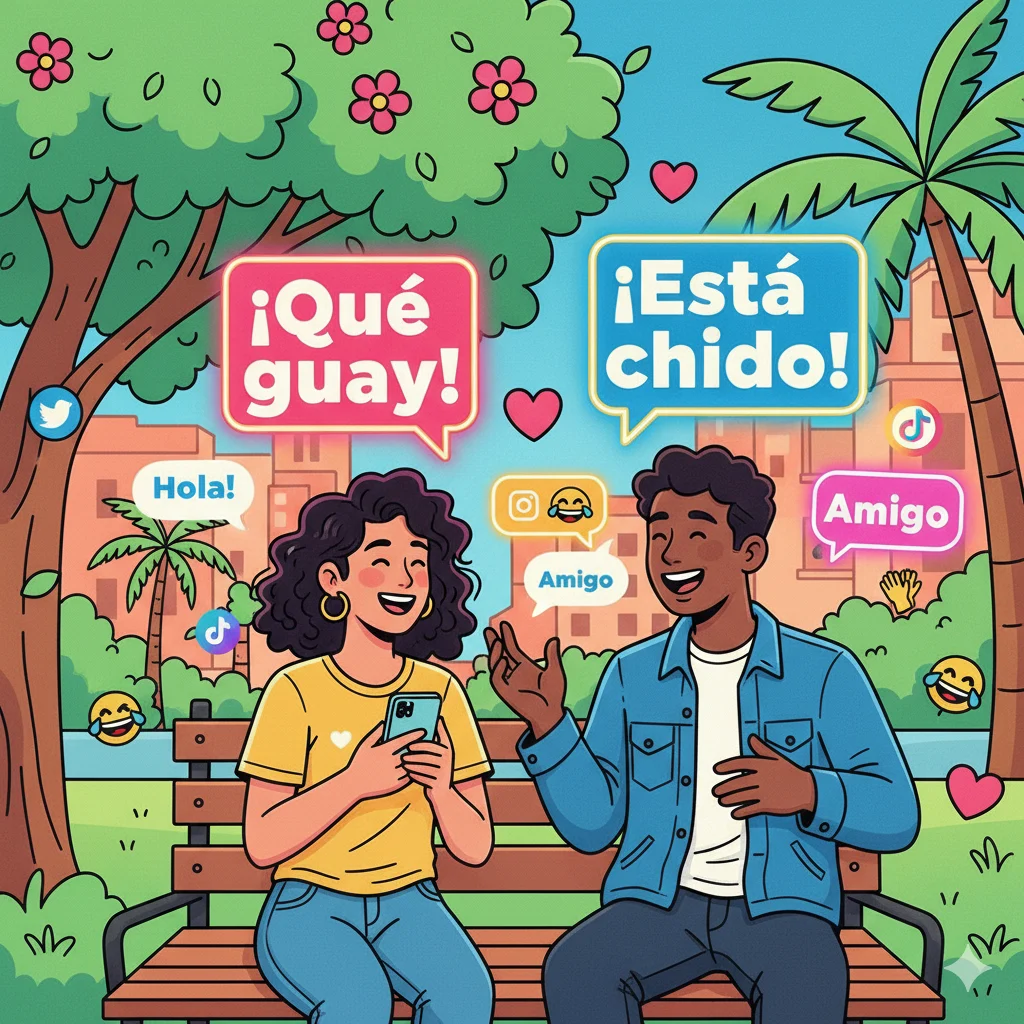
- 🇪🇸 Guay (Spain): Used like “cool” or “awesome.” Example: ¡Qué guay tu coche! (“Your car is so cool!”)
- 🇲🇽 Padre (Mexico): Means “cool” or “awesome.” Example: Esa fiesta estuvo padre. (“That party was cool.”)
- 🇨🇴 Bacano (Colombia): A casual word for something cool or fun.
- 🇨🇱 La raja (Chile): Literally means “the crack,” but slang for “awesome.”
- 🇻🇪 Chévere (Venezuela, Caribbean): Very popular word meaning “cool” or “great.”
- 🇦🇷 Copado (Argentina): Used to describe something cool or interesting.
Each term reflects a unique cultural tone — Spain’s guay is trendy and upbeat, while chévere in the Caribbean feels warm and friendly.
🌍 Regional Variations: Cool Slang by Country
Spanish is spoken in over 20 countries, and each region has its own “cool” word. Here’s a breakdown:
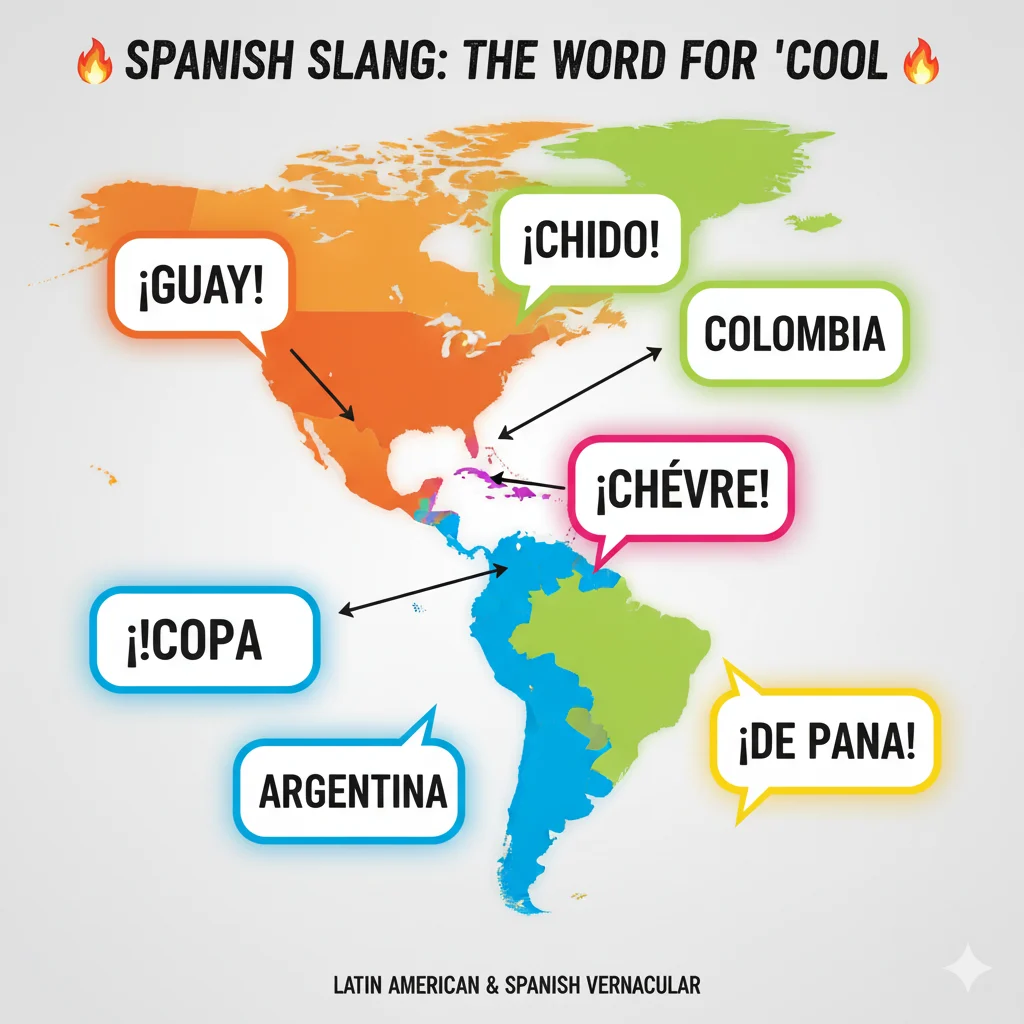
🇪🇸 Spain:
- Guay – The most universal and casual.
- Chulo – Means “cool” but can sound cocky if misused.
🇲🇽 Mexico:
- Padre – The go-to slang for cool.
- Chido – Also means “awesome.”
- Cool – Yes, many young Mexicans just use the English word!
🇨🇴 Colombia:
- Bacano – Used for anything positive or fun.
- De una – Means “for sure” or “cool, let’s do it.”
🇨🇱 Chile:
- La raja – Literally “the crack,” but it means “awesome.”
- Filete – “Fine cut” — slang for “excellent.”
🇦🇷 Argentina:
- Copado – Chill, cool, or nice person.
- Piola – Means “cool” or “relaxed.”
🇻🇪 Venezuela:
- Chévere – Friendly, easygoing way to say “cool.”
- Fino – Similar to “classy” or “cool.”
🗣️ How to Use “Cool” Naturally in Spanish Conversations
To sound fluent, it’s not just about knowing the word — it’s about using it naturally. Here’s how “cool” appears in everyday Spanish chats:
- ¡Qué guay tu look hoy! – “Your outfit looks so cool today!”
- Esa canción está chida. – “That song is cool.”
- Fue una noche bacana. – “It was a cool night.”
- Tu amigo es bien copado. – “Your friend is really cool.”
Pro Tip 💡: Always listen to locals. If you’re in Colombia and say guay, it might sound out of place — bacano fits better!
🎶 “Cool” in Spanish Pop Culture & Music
Spanish pop songs and movies are full of local slang. Artists like Bad Bunny, Shakira, and Rosalía use regional expressions that give their lyrics authenticity.
Examples:
- In Puerto Rico, Bad Bunny says “Todo chévere, mami” — meaning “Everything’s cool, baby.”
- Spanish influencers on TikTok might say “Esto está guayísimo” — an exaggerated way to say “super cool.”
Pop culture helps spread these words internationally — so even if you’re not from Mexico, you might still hear chido in global online slang.
📱 “Cool” in Spanish Texts and Online Slang
When texting, young Spanish speakers mix slang with emojis and abbreviations:
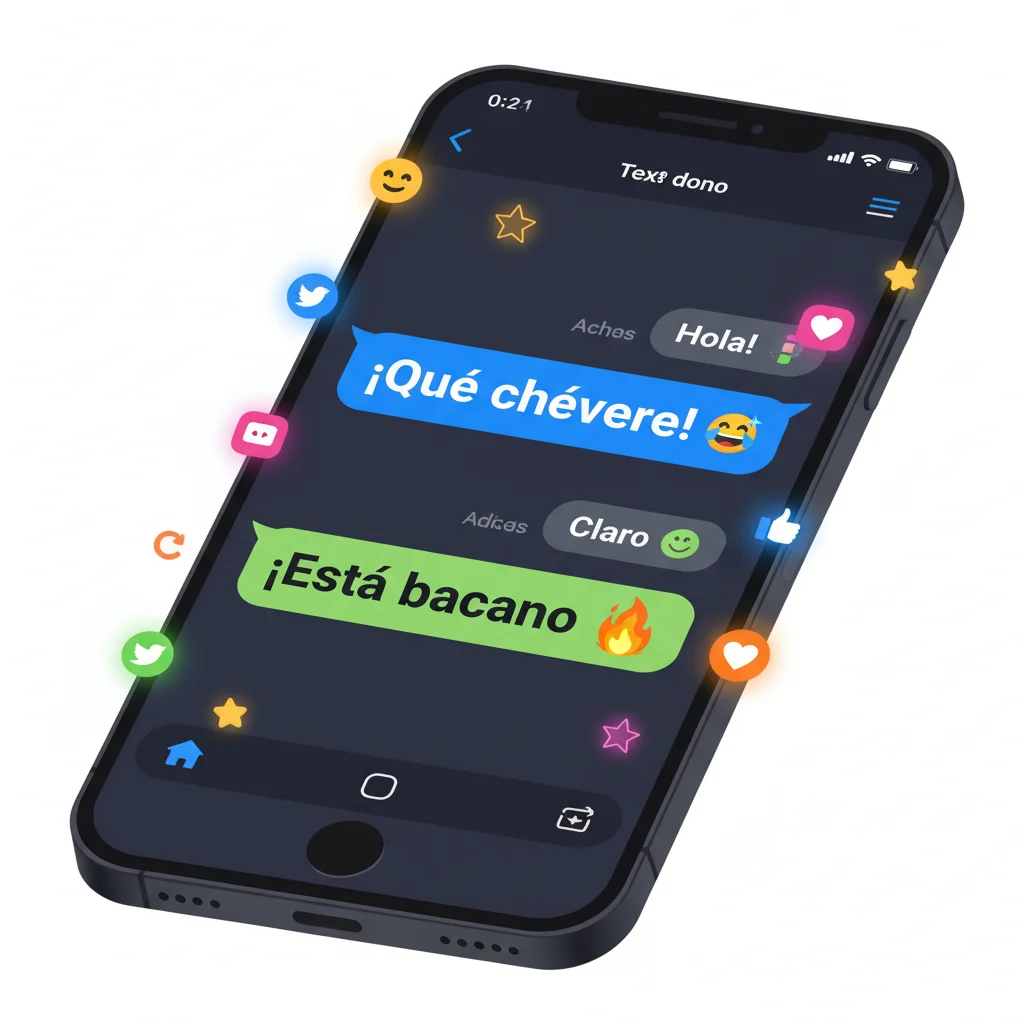
- ¡Qué guay! 😎
- Está chido ese meme 😂
- Copado el video 🔥
- Chévere, hablamos mañana!
Sometimes, they even shorten words:
- Bkn = Short for bacán or bacano (cool).
- Chvr = Short for chévere.
This shows how slang evolves digitally — from speech to texting to TikTok captions.
😎 Cultural Meaning Behind “Cool”
In English, “cool” has emotional neutrality — it’s casual and universal. But in Spanish, “cool” slang carries cultural identity.
- In Spain, guay represents modern youth culture.
- In Mexico, chido and padre carry warmth and friendliness.
- In the Caribbean, chévere shows relaxed, upbeat energy.
These words reveal how language reflects attitude and community spirit — what’s “cool” in one place may not fit in another.
💡 Common Mistakes English Speakers Make
- Using the wrong slang in the wrong country.
Saying guay in Mexico might sound odd — say padre or chido instead. - Overusing “cool.”
In Spanish, slang words are more situational. Use them sparingly to sound authentic. - Forgetting tone.
Chulo in Spain can mean “cute” but also “arrogant” depending on context.
🌎 Modern Alternatives to “Cool”
As slang evolves, younger generations invent new ways to say “cool.”
Some newer or online terms include:
- Top – Borrowed from English, meaning “awesome.”
- Full HD – Ironically used in Argentina to mean “super cool.”
- Crack – Used in Spain to call someone talented or amazing.
Example:
- Eres un crack en fútbol. → “You’re amazing at soccer.”
🧩 Why Spanish Slang for “Cool” Matters
Learning regional slang helps you connect with people, not just translate words. When you say chévere in Venezuela or copado in Argentina, you sound more genuine.
It shows cultural respect — that you’re not just speaking Spanish, but speaking their Spanish.
💬 Real-Life Scenarios
Scenario 1: You’re at a party in Mexico.
Someone says, “¡Qué chido tu outfit!”
You smile and reply, “Gracias, la música también está padre.”
Scenario 2: You’re chatting online with a Colombian friend.
They text, “Esa serie está bacana.”
You reply, “Sí, súper bacana.”
Scenario 3: You’re traveling in Spain.
Your host says, “¿Te gustó el festival?”
You say, “¡Sí, estuvo guayísimo!”
Each response feels natural — that’s the power of local slang!
❓ FAQs About “Cool” in Spanish Slang
Q1. What’s the most common Spanish word for “cool”?
👉 Guay in Spain and chévere in Latin America are the most widely used.
Q2. Can I use “cool” in English when speaking Spanish?
Yes! Many young speakers mix English slang, especially in Mexico and Spain.
Q3. What’s the difference between padre and chido?
Both mean “cool,” but padre sounds a bit more neutral; chido is more playful.
Q4. Is chulo always positive?
Not always — it can mean “cute” or “cocky,” depending on tone and region.
Q5. Which slang should I use in South America?
Use bacano in Colombia, chévere in Venezuela, and copado in Argentina.
🌈 Conclusion: Speak the Coolest Spanish Ever
Saying “cool” in Spanish isn’t just about vocabulary — it’s about connection. Each slang word tells a story about culture, humor, and belonging.
Whether you’re saying guay in Madrid, chévere in Caracas, or padre in Mexico City, you’re doing more than sounding fluent — you’re speaking with authenticity.
So next time you want to say something’s awesome, skip the dictionary word — use the slang that locals love. That’s the real meaning of “cool.”

